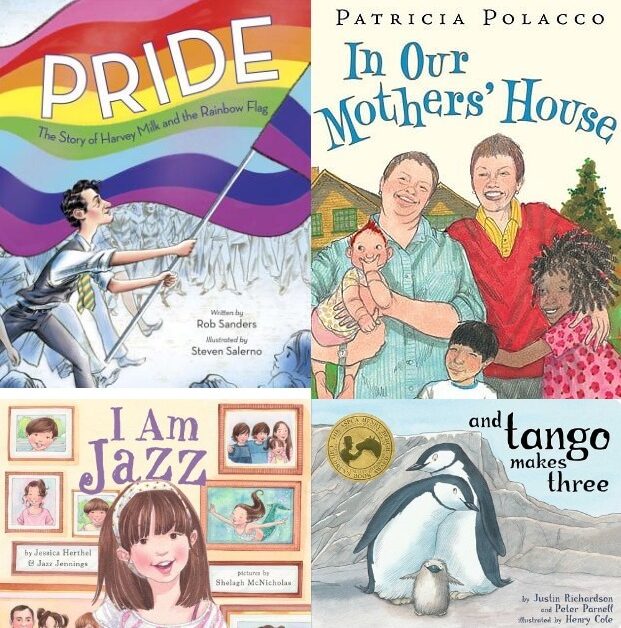Many of the most-banned picture books removed from school shelves tell the true stories of civil rights or the LGBTQ community while others are simply “lighthearted fiction about animals or babies.”
“Most feature a protagonist of color or characters who reflect the LGBTQ+ experience,” says the anti-censorship nonprofit PEN America about the titles on its just-released list of the most-banned picture books of the 2021-2022 school year.
YA and adult books were banned in much larger numbers than were titles written for the youngest readers. Still, PEN America counted 317 picture books that were yanked from shelves last school year.
More from DA: Kids’ books about beloved baseball heroes fall prey to K12 censors
There is a three-way tie at the top of Pen America’s list, and all tell LGBTQ stories. Pride: The Story of Harvey Milk and the Rainbow Flag, by Rob Sanders and Steve Salerno, covers the history of the now-iconic gay pride flag, which originated in 1978 with activist Harvey Milk and designer Gilbert Baker and has since become a global symbol of “love, hope and equality,” the author says on his website.
I Am Jazz, by Jessica Herthel, Jazz Jennings, and Shelagh McNicholas, is the account of a transgender child’s experience that is based on the life of Jazz Jennings, a young YouTuber who is now a national spokesperson for trans-kids. And Tango Makes Three, by Peter Parnell, Justin Richardson, and Henry Cole, tells the true story of two male penguins who created a nontraditional family at the Central Park Zoo.
Here’s a look at the picture books (along with each publisher’s description) that have been banned from schools multiple times:
- In Our Mothers’ House, by Patricia Polacco. “Marmee, Meema, and the kids are just like other families, even if some people don’t accept them. They teach their children that different doesn’t mean wrong.”
- The Baby Tree, by Sophie Blackall. “A curious boy gets funny answers to the question, ‘Where do babies come from?’ before his parents set him straight.”
- Separate Is Never Equal: Sylvia Mendez and Her Family’s Fight for Desegregation, by Duncan Tonatiuh. “The true story of a family’s fight to end segregation in California, seven years before Brown v. Board of Education.”
- Everywhere Babies, by Susan Meyers and Marla Frazee. “Rhyming text celebrates babies and the things they do—playing, sleeping, crawling, and being cared for by families who love them.”
- Worm Loves Worm, by J J Austrian and Mike Curato. “Two worms fall in love, and friends want to know who will wear the dress and who wears the tux.”
- When Aidan Became a Brother, by Kyle Lukoff and Kaylani Juanita. “When Aidan was born, everyone thought he was a girl until he settled into life as a boy. So when his parents announce that they’re going to have a baby, Aidan wants to make sure everything is right for his younger sibling.”
- We March, by Shane W. Evans. The story of the 1963 March on Washington where Martin Luther King Jr. delivered his historic “I Have a Dream” speech.










